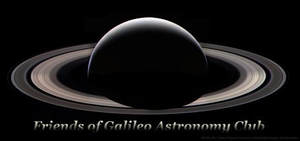FOG Blog
|
Sky Report by Ted Gruber
Evening Sky Venus (magnitude -4.1) becomes visible in the west at dusk. The bright planet currently sets just before midnight, and just after midnight by mid-May. The moon makes a close approach to Venus the evening of April 22 and passes about 1° north of Venus the next night. Mars (magnitude 1.2) becomes visible near the zenith as darkness falls, currently setting about 2:15am. By mid-May, the red planet dims slightly to magnitude 1.5 and sets about an hour earlier. The moon passes about 3° north of Mars the evening of April 25. Mercury (magnitude 1.8) becomes visible in the west-northwest about 30 minutes after sunset, currently setting just past 9:30pm. The innermost planet will become more difficult to see in the next few days as it sets sooner and becomes lost in the twilight. The new moon appears about 4° west of Mercury the evening of April 20. The moon sets at 9:07pm that evening. Morning Sky Saturn (magnitude 1.0) currently rises in the east-southeast about 4:30am, and just before 3:00am by mid-May. The ringed planet remains visible until fading into the morning sunlight. The moon passes about 3° south of Saturn the morning of May 13. Jupiter (magnitude -2.1) returns to the morning sky in late April, rising in the east-northeast just before sunrise, and about an hour earlier by mid-May. The giant planet remains visible until fading into the morning sunlight. The moon occults Jupiter the morning of May 17. That morning, the moon rises at 4:34am and Jupiter follows one minute later. From Longview, the occultation begins when Jupiter passes behind the moon at 4:51am, but the pair will only be about 2° above the horizon at that time. Jupiter reappears at 5:30am in the morning twilight and 8.5° above the horizon. Mercury (magnitude 2.0) returns to the morning sky in mid-May, rising in the east-northeast about 30 minutes before sunrise. The moon passes about 3.5° north of Mercury the morning of May 17. Mercury rises at 5:00am that morning. Meteor Showers The Lyrids are a medium-strength meteor shower active from April 15-29, peaking the night of April 22-23. The shower usually produces good rates for three nights centered on the peak. The moon is favorable. The meteors appear to emanate from a point in the constellation Lyra, high in the east-northeast sky. The Eta Aquariids meteor shower is active from April 15 to May 27, peaking the night of May 5-6. The shower is best viewed from the southern hemisphere, but it can still produce rates of 10-30 meteors/hour from the northern hemisphere. Unfortunately the night of the peak coincides with the full moon this year. Moon Phases New (4/20), first (4/27), full (5/5), last (5/12), new (5/19), first (5/27).
0 Comments
Your comment will be posted after it is approved.
Leave a Reply. |
Friends of Galileo
We are astronomy enthusiasts who love to learn and to share our wonder at the amazing sights right overhead. Archives
February 2024
Categories
All
|

 RSS Feed
RSS Feed